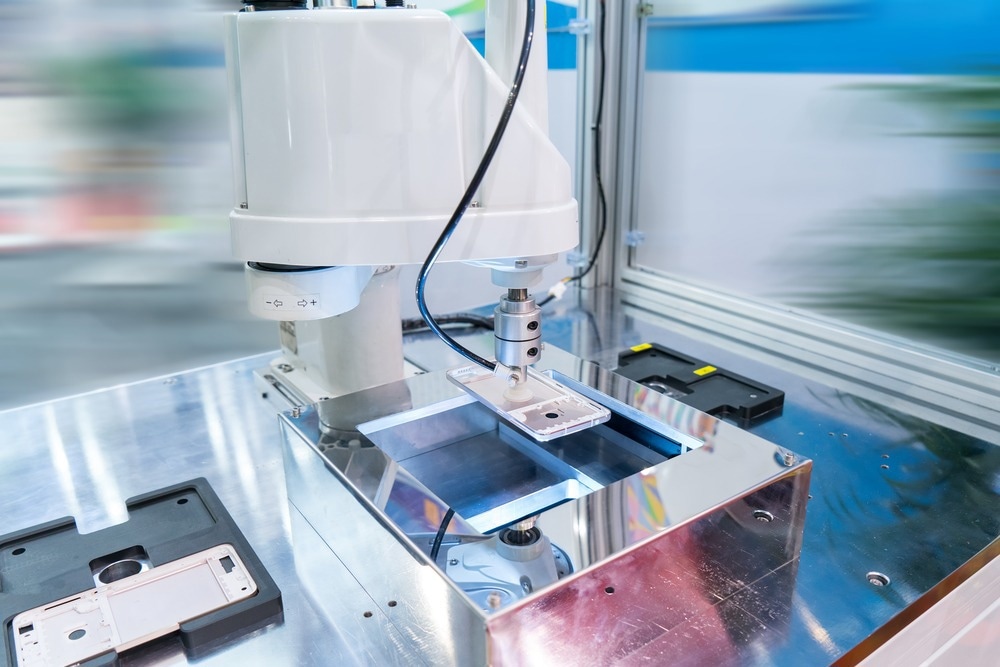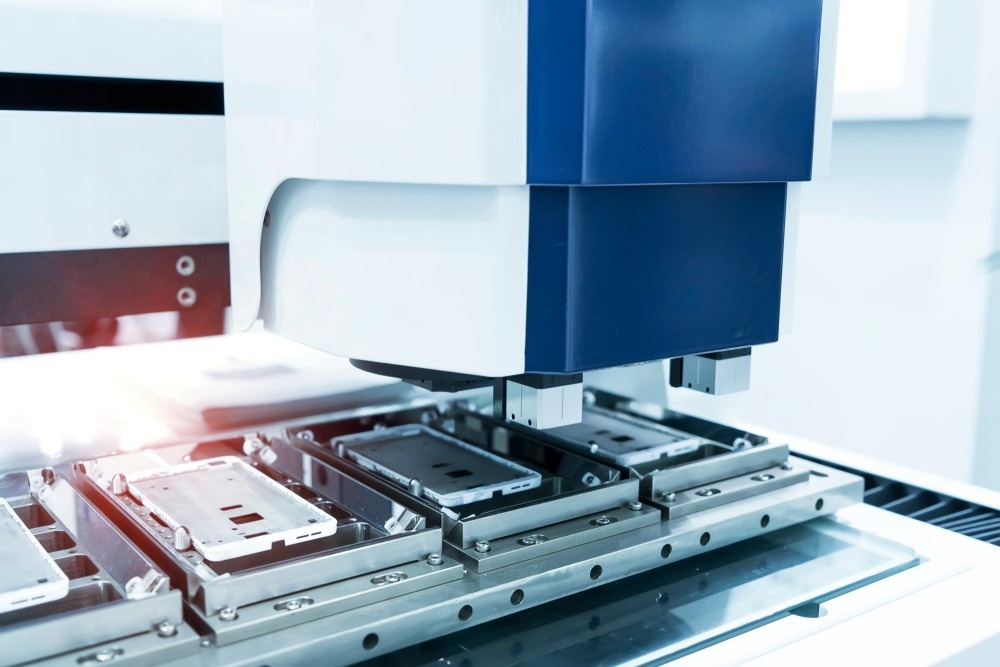What Uncooked Components are Employed to Make Cellular Phones?

Cellular telephones have revolutionized our lives in ways no one could have predicted 30 decades ago. In the previous couple a long time, cell phones have remodeled from uncomplicated communication units to portable pcs through the revolutionary use of distinctive products and features.

Impression Credit: asharkyu/Shutterstock.com
What’s Within a Cell Phone?
The increase of cellular phones around the previous 10 years is the most considerable technological change because the internet’s institution as a world wide conversation network in the 1990s. Considering that then, our life have adjusted speedily.
The seemingly limitless capabilities of mobile phones as amusement devices, conversation units, and individual organizers are produced achievable by the exceptional traits of the products present within just a cellular cellphone.
Many metals, composites, and compounds extracted from minerals and ores make up the electronic components of cell phones. The fantastic harmony of electronics and chemistry would make it feasible for cell mobile phone users to communicate with the rest of the globe via voice calls, text messages, and social media platforms.
As cell cellular phone technological know-how developments, the chemical elements employed to assemble these gadgets will continue participating in a important purpose in increasing their outstanding capabilities.
Plastic
Plastic is not the natural way developing in the surroundings. As an alternative, it is the byproduct of processing crude oil.
Plastic is mostly employed to manufacture pc chip coatings, protective casings, and electrical elements. Most mobile cellphone plastics are thermoset plastics these as fluoropolymer, polymethylmethacrylate, polypropylene, polycarbonate, phenol formaldehyde, and styrene for the reason that they are resistant to wear and the warmth generated thanks to continual use.
Glass
Glass is a important element of a cell mobile phone, notably the screen however, this is no everyday glass. This glass is composed of silicon dioxide and aluminum oxide, with an ultrathin coating of indium tin oxide extra so that the display screen can be utilised devoid of problems.
Most cell cellular phone suppliers now make use of Gorilla Glass, a light-weight, thin, fortified glass made by Corning.
Metals
Metals are applied in the circuitry and batteries of mobile telephones. Nonetheless, metals are not in their purest sort when extracted from the ground. They are initially extracted from their minerals or ores just before currently being used in cellular phones.
The next are some of the metals utilised in mobile telephones:
Lithium
Lithium is a lightweight uncommon earth metal with a higher electrical storage potential. As a end result, it is principally used in developing cellular telephone batteries. It is mined from hard-rock ores and salt lakes.
Silicon
Silicon represents virtually 25% of the materials made use of to manufacture a smartphone. It is generally employed to make the processor of the cell cellular phone. Silicon is a single of the most widely made use of components in producing cellular phones because of to its distinctive homes as a semiconductor.
It is also very low-priced considering that it is identified in nearly 30% of the Earth’s crust.
Iron
Iron is mainly applied for all the screws required to assemble the various elements of cellular telephones. Iron alloys are also applied to make overall body parts and batteries. It helps make them hugely durable and resistant to oxidation.
Aluminum
The most common use of Aluminum is to property electronic elements of a cellular telephone. On typical, 22.18 grams of Aluminum is used in a smartphone. It serves as a shielding layer to secure the circuitry from the antenna’s electromagnetic radiation.
Copper
Copper is utilised extra than any other metal in cell cell phone factors because of to its large electrical and thermal conductivity. The primary desired destination of this content is the cable of the equipment.
In addition, chips and printed circuits incorporate copper due to the fact of its excellent electrical conductivity, although warmth sinks are made from copper because of to its very high heat dissipation component.
Cobalt
Cobalt is the most highly-priced uncooked content utilised to manufacture lithium-ion batteries. It is employed with Lithium to lengthen the everyday living of mobile cellphone batteries as it supplies the highest electricity density among metals.
In addition, coating copper wires with cobalt increases their durability.
Tin and Direct
Tin is valued for its distinctive bodily qualities, availability, and reduced price, and it is used predominantly to hook up diverse elements to the motherboard through solder joints.
In addition to tin, lead is also applied to make some of the solders many thanks to its ductility.
Zinc
Zinc alloys with Aluminum and copper are utilised to manufacture microphones and speakers. It is also used in the production of batteries.
Nickel
Nickel is a challenging, malleable, silvery metal utilized in mobile mobile phone batteries, capacitors, and electrical connectors.
Silver
Owing to its significant electrical conductivity, silver is made use of to make conductors, switches, contacts, and conductive lines of the printed circuit.
Gold
Gold is remarkably electrically conductive and corrosion-resistant. It makes conductors, switches and buttons, RAM, motherboards, and cables.
Overall health Threats and Environmental Dangers Affiliated with the Raw Materials of Mobile Phones
A single cellular cellphone contains various elements that the EU Commission categorized as exceptional Earth metals in 2014. In some nations around the world, these products are attained by mining, which is challenging and daily life-threatening.
Aluminum, copper, and its supply chain are relevant to large CO2 emissions and soil and h2o contamination threats.

Impression Credit history: asharkyu/Shutterstock.com
Thanks to their raising reputation and restricted lifespan, cellular telephones constitute an at any time-growing squander stream. Normally, these devices can not be repaired right after malfunctioning. What’s more, a lot less than 20% of smartphone factors are recyclable. As a final result, a expanding quantity of electronic waste or e-squander accumulates on Earth.
The total of e-waste on Earth in 2018 was about 50 tons and is constantly expanding. In addition, the perilous metals in aged cell phones can pollute our water offer if they are not thoroughly recycled or disposed of.
Each individual mobile phone maker has to search outside of its very first purchaser and consider developing a circular overall economy that lowers or gets rid of squander by recycling valuable elements back again into the producing method.
These strategies could be beneficial for consumers and the environment. Even so, gadgets hibernating in households significantly hamper the adoption of circular economic climate procedures in the mobile mobile phone value chain.
References and Even further Looking through
Jenness, J. E., Ober, J. A., Wilkins, A. M., & Gambogi, J. (2016). A environment of minerals in your mobile device (No. 167). US Geological Survey. http://dx.doi.org/10.3133/gip167
Lotzof, K. (2020). Your Mobile Mobile phone is powered by Precious Metals and Minerals. [Online]. Natural Background Museum. Out there at: https://www.nhm.ac.uk/discover/your-cellular-cellular phone-is-run-by-important-metals-and-minerals.html
Trento, C. (2022). What is the Product of Your Telephone Human body? [Online]. Stanford State-of-the-art Components. Offered at: https://www.samaterials.com/material/what-is-the-content-of-your-telephone-physique.html





